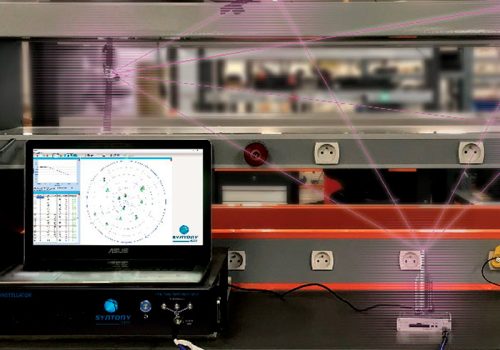What is a GNSS simulator?
- Tech


Share this article !
GNSS Constellations signals and bands (e.g. GPS, Galileo, GLONASS, IRNSS NavIC, QZSS, BeiDou)
Natural interferences (multipath, ionosphere propagation)
Unintentional interferences (telecommunication towers, electromagnetic)
Malicious interferences (jamming, spoofing)Based on Software-Defined Radio (SDR) or Analog technology, they optimize the testing costs by enabling the simulation of any scenario on any place on earth or in space, from a laboratory or even an office.
Testing GNSS receivers in optimal conditions with the purest GNSS signal
Since GNSS simulators allow total control on the environment simulated, manufacturers can isolate constellations signals and bands to test their receivers. They can work their way up in complexity and performance by adding or removing signals during the simulation and observing the receivers’ behavior.
This key feature of GNSS simulators makes them precious tools in the processes of industrial designing, validation, and production.
Simulating stressful scenarios to get the best from GNSS receivers
The natural GNSS environment is filled with interferences produced by other technologies, by the environment itself, or even by the electromagnetic activity of the equipment. GNSS simulators can provide scenarios with simulated interferences and challenge receivers to compute their positions correctly and offer the performance aimed by manufacturers.
Depending on the nature of the receivers, those testing interferences can be minor, or very serious. With a GNSS simulator, a manufacturer can test its receivers against jamming or spoofing, and even virtually shut down a satellite or a constellation to monitor the receiver’s behavior.
The repeatability of those tests scenarios allows manufacturers to improve their receivers and run the tests again and again until the product fits their requirements.
Large range of performances to fit all receivers’ requirements
A receiver designed to integrate a satellite will not have the same requirements as one produced for an aircraft or an autonomous car. Criteria like multi-frequency, multi-constellation, high dynamics trajectories, or Hardware-in-the-loop must be considered.
Thus, many ranges of GNSS simulators are available, depending on the use cases addressed. At Syntony, the entry point GNSS simulators Constellator™ offers up to 2 constellations to create a testing environment, and the most powerful ones are even able to simulate signals on high-speed trajectories at high altitudes.
Finally, there are 2 major types of GNSS Simulators: Analog and Software-Defined Radio (SDR). Analog simulators were the first to be produced, and SDRs arrived with the digital revolution. They brought adaptability and agility to the market, as simulation options can be added remotely to the software, saving precious time and money manufacturers need to update their machines.